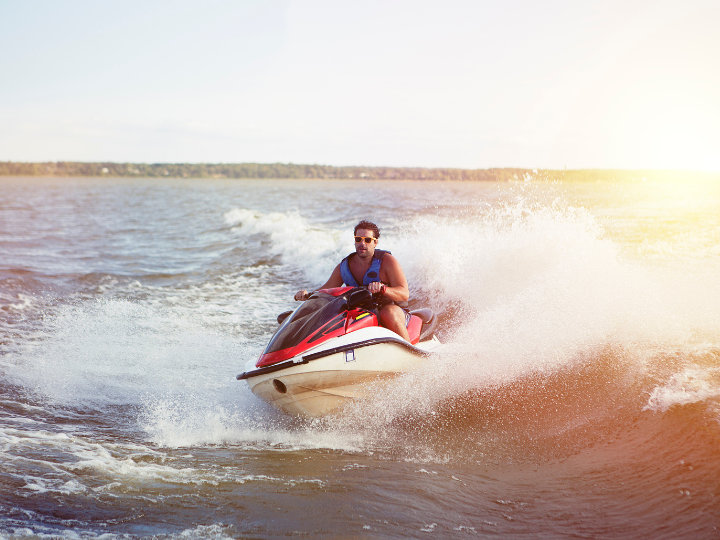How To Prepare Your Snowmobile for the Winter Season
October 27th, 2022
Some Canadians begin to brace themselves for winter as the cooler weather rolls in. But for others, winter is a time for snow sports and preparing themselves for play. This means taking their snowmobile out of hibernation and ensuring it is safe for riding. Here are some of the top ways to confirm you are snowmobile-ready for the winter season.
Some key things to remember when preparing your snowmobile for the winter:
Inspect Your Snowmobile
Before you take your snowmobile out of storage and onto the trails, you should first give it a check-up. Taking it to a mechanic is a great idea, but inspecting your snowmobile for any signs of damage is also important. Be sure to take it out of your shed or garage to ensure you have the proper lighting to detect any concerns. Then, give your snowmobile a good once over to see if there are any signs of wear and tear, rust, or loose parts. In the event there are any visual cues indicating some maintenance issues, you will want to get it to a mechanic before riding.
Beyond the visual inspection, you should also check the gas, brake, and coolant fluids. Empty any remaining fluid left over from last year and refill it. Also, check the battery to ensure it is not discolored, broken, or warped. Moreover, confirm that the electrical system, including the warning lights are working as intended.
Fill Engine Oil
In addition to checking the fluids in your snowmobile, you should not forget to check the oil in your engine. This is a step that can be overlooked, but to avoid stalling, you should ensure your oil is filled to the appropriate level. If you are not sure where this is, consult your owner’s manual. While doing this, it is also a good idea to check any fittings or cables and add any lubricant, if needed.
Test the Steering Wheels & Brakes
One of the most essential aspects of your snowmobile ride is you can steer and brake when needed. As such, you should test your steering mechanism and brakes before using your snowmobile. If you can easily get to your brake pads without taking your mobile apart, observe if the pads look worn or if the disc is damaged. If so, you will need to replace your brake pads before riding. While it may cost more money than you might want to spend, hiring a professional to complete this for you will save you time and headaches. Testing the steering can easily be done at home. Simply turn the handlebars back and forth to ensure there is no tightness and it moves freely.
Prepare Yourself
Just as important as preparing your snowmobile is preparing yourself and any riders. Here are some tips on what you can do to get ready for riding!
Safety Gear
If you have driven a snowmobile before, you most likely understand the importance of safety gear. Before riding, be sure you have a helmet with a chin strap that fastens securely and meets the standards set by Ontario. You should also wear layered clothing, including gloves, eye protection, and a face shield. Furthermore, it is helpful to pack an emergency kit to carry with you at all times. A backpack will suffice, providing it contains these essential items in case you get stranded on the trails:
- GPS or map
- First aid kit
- Flares
- Flashlight with extra batteries
- Extra pair of gloves and socks
- A foldable shovel
- An axe
- Vehicle repair kit
Some insurance companies offer roadside assistance as optional coverage in their snowmobile policies, which can also help in these scenarios. If this is something offered to you, it is recommended you purchase it.
Know the Laws
You should arm yourself with information on the laws where you plan to ride. For example, speed limits can vary depending on where you are riding, such as in public parks or on trails. In addition, provinces can have different age limits for snowmobile riding or laws regarding what is required for insurance limits or registration. Make sure you have the proper insurance and registration paperwork for your snowmobile set up before riding and is kept in a safe place.
Check the Weather
Most importantly, make sure you check the local weather forecasts before heading out. Conditions can change quickly, and you do not want to be caught in poor weather. For any ice-related activities, avoid warm days or days when storms are possible, as this can melt the ice. Warm weather and rapidly changing temperatures can also increase the risk of avalanches, especially on steep slopes. Always consult your region’s avalanche bulletin beforehand, and stay open-minded about using alternative routes if necessary.
Final Thoughts
You can do many things to prepare yourself and your snowmobile for the winter season. But one of the most critical is making sure you have the right insurance. Snowmobile insurance is not only required in most cases, but it can provide you with the peace of mind that your investment is well protected. Call us today for a no-obligation quote!












